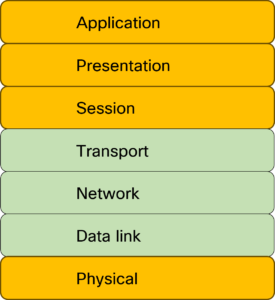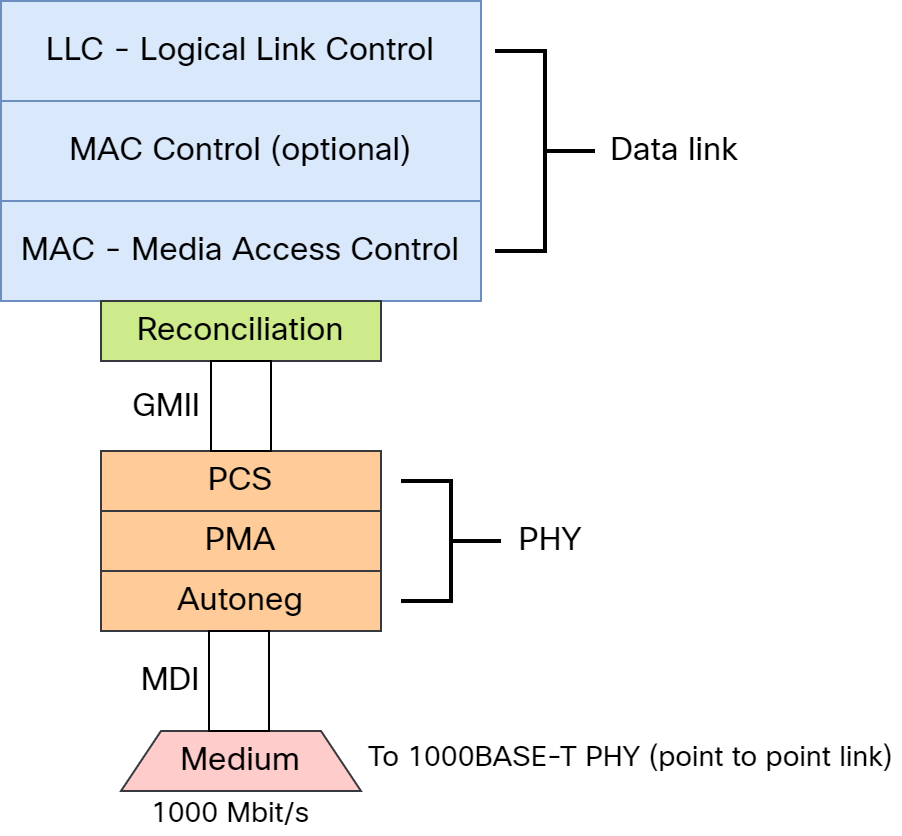How does Ethernet detect that a link goes down? This, what I thought was a simple question, I asked myself a couple of weeks ago. I realized I didn’t have a very good answer. I realized I had more to learn about Ethernet and the physical layer and so does pretty much the entire networking industry. Through the graceful help of Peter Jones at Cisco, I got in touch with George Zimmerman, an independent professional with a PhD in electrical engineering, a history of teaching at Caltech, and that works within the IEEE on different standards. To answer my initial question, we first need to understand more about Ethernet, and especially the physical layer. As every version of Ethernet has slightly different PHY, I will be covering 1000BASE-T. This will be covered in a series of posts, this being the first.
Going back to the OSI model, most roles in networking puts the focus on layers two to four:

This is natural as most of our work relates to these layers.
When we think of two hosts communicating, we imagine that the transceivers connect to each other and that there are ones and zeroes traveling across the cable:

While this is true, it’s a very simplified view of what actually goes on.
We also tend to think that there is only data on the wire when there is something to send. Like this:

This is also a very simplified view that we will address in a coming post.
The first thing we need to cover is that data link and physical layer in OSI is a bit more involved than we learn in most networking books:

Some layers are probably familiar while others you may not have seen before. Let’s briefly cover what each layer does (from 1000BASE-T perspective):
- Logical Link Control (LLC) – Provides multiplexing towards the upper layers. Optionally provides flow control, acknowledgement, and error notification.
- MAC Control – Provides realtime control and manipulation of MAC sublayer.
- Media Access Control (MAC) – CSMA/CD, frame structure, and frame synchronization.
- Reconciliation – Maps signals provided at GMII to Physical Signaling (PLS) primitives.
- Gigabit Media Independent Interface (GMII) – Interface between MAC sublayer and PHY. Provides media independence between MAC and PHY.
- Physical Coding Sublayer (PCS) – Interfaces between Physical Medium Attachment (PMA) and the Gigabit Media-Independent Interface (GMII). The PCS is responsible for data encoding and decoding, scrambling and descrambling, and to pass the coding to the PMA.
- Physical Medium Attachment (PMA) – The interface between PCS and Auto negotiation. The primary role is to serialize and de-serialize incoming data stream from the MDI.
- Autonegotiation – Advertises speed and duplex capabilities and determines the leader/follower relationship on the link.
- Medium Dependent Interface (MDI) – This is the connector that used to make the mechanical and electrical interface between the transceiver and media segment. For 1000BASE-T, this is 8P8C although most people refer to it as RJ-45.
- Medium – The cable that connects the transceivers.
This is all for the first post. In the next one we’ll take a closer look at 1000BASE-T.